Your Basket is currently empty!
What Does “Trace” Mean in Cold Process Soap Making and How to Slow it Down
What is Trace?
Well trace is when your oil, lye and water have mixed together to the point of no return and have created an “emulsion.” At this point they have reached trace.
This means that they will no longer be able to separate into oil, lye and water again. They have now become soap.
If you use a stick blender it doesn’t take much effort to achieve trace. Maybe 3 bursts with your stick blender and some stirring will bring you to light trace (where soap has the consistency of smooth, single cream).
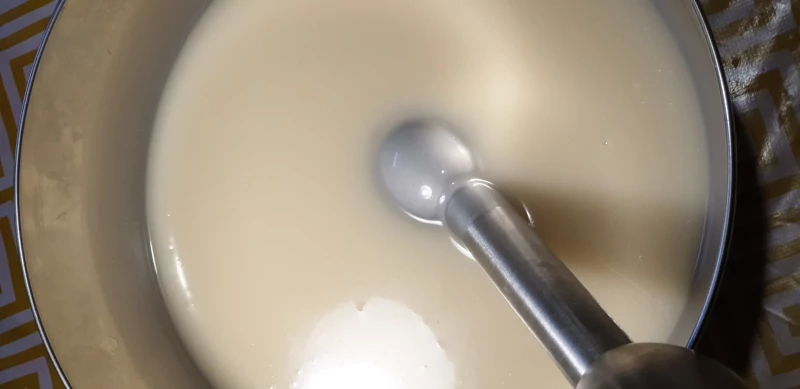
This is how soap batter looks when it is fully mixed or emulsified
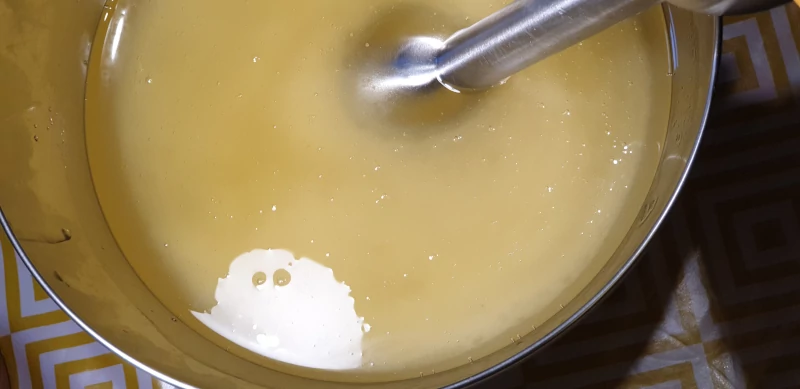
This is how the soap batter looks when the oil and lye have been partially mixed.
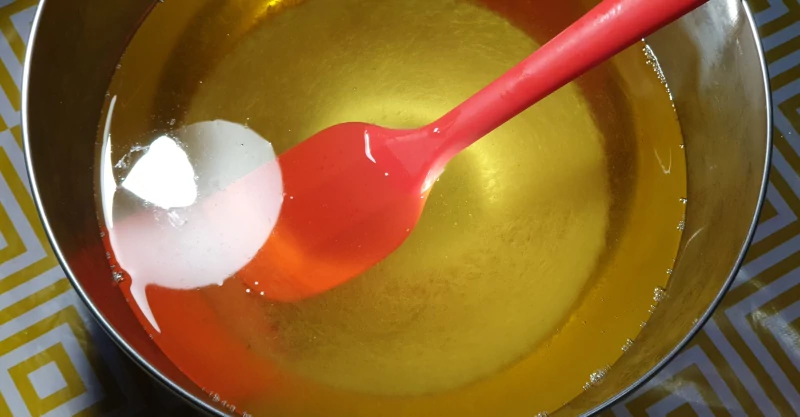
This is how the oil and lye look when they have just been added to the bowl. No mixing.
What is “False Trace” and when does it happen?
False trace is when you think your soap has fully saponified but it has not. You can spot false trace by carefully looking at your soap batter.
With false trace your soap batter often looks grainy and happens generally happens when you soap at cool temperatures.
Your soap mixture thickens but it hasn’t properly saponified. You might even think that your soap has reached thick trace.
If this happens to you and you are soaping at low temperatures don’t panic. Just keep stirring and the soap batter tends to get thinner again and will “emulsify” or “trace.”
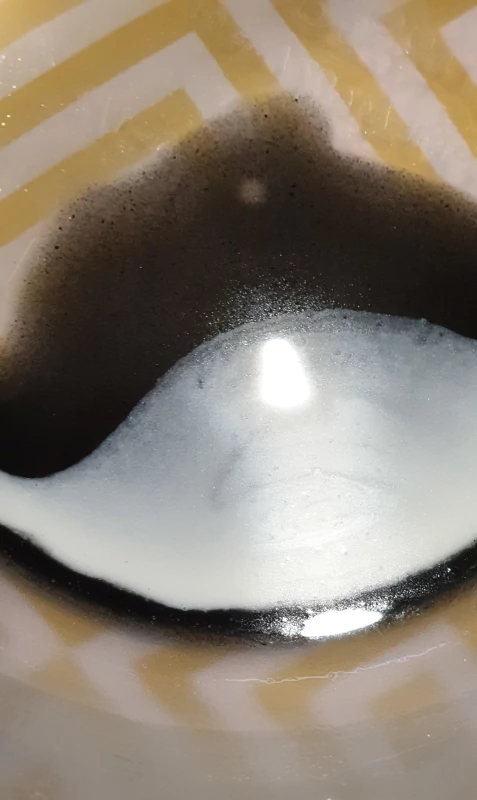
This soap batter has a “grainy” appearance meaning that it has not fully traced/saponified.
How can I tell if my soap has reached light trace?
If it leaves a trail that remains on the surface then your soap has reached trace.
It is very easy to tell if your soap has reached light trace. Light trace has occurred when you take some soap and drizzle it on the surface of your soap batter.
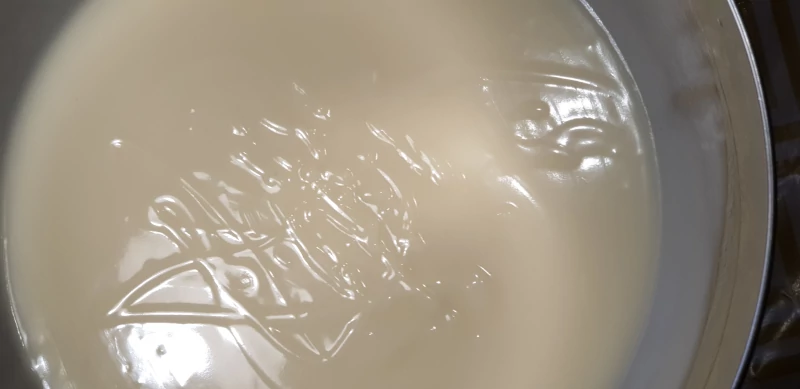
But light trace is too thick to make very fine swirls. How can I start pouring even earlier at ULTRA light trace?
Ultra thin trace is the stage where you want to start colouring, fragrancing and making your patterns. If you start out at a thicker trace your soap may be too thick to make nice fine swirls.
Being able to test the difference between ultra light trace and light trace bamboozled me for years. I always wanted to make beautiful swirls but if I did not allow my soap to properly saponify I sometimes ended up pouring soap too early which was a problem.
If your pour too early your different coloured soap batters will then blend into one another and the colours become murky and have a grainy consistency.
Then when you think that your soap has set and you are ready to cut it, you find that it’s crumbly and useless and only good for the bin!
However if you wait too long for light trace your soap may be a little too thick so you don’t get nice feathery swirls.
At this stage of trace soap can start to move very fast and get thick really quickly. So if you want to swirl it is better to start pouring your soap at very light trace.
How will I know that my soap has reached ultra light trace so that I can start swirling my soap?
We are always told that light trace has occurred when you take some soap and drizzle it on the surface of your soap batter.
As we discussed earlier if it leaves a trail that remains on the surface of your batter then your soap has reached trace.
However this stage is light or thin trace which is fine but you can start making your swirls and pouring earlier than that.
The easiest way to know is to pour a little of one of your colours on a spoon or surface. Then pour a different colour on the surface of the first colour.
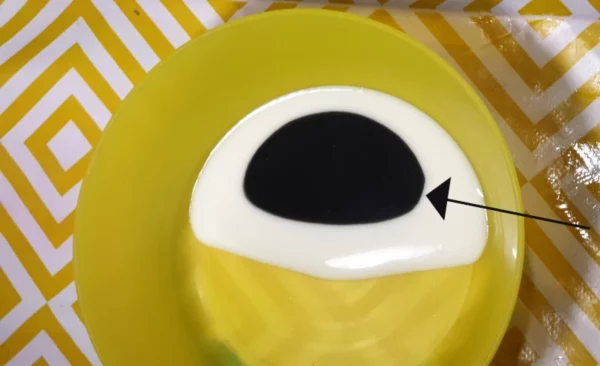
If the colours remain separate and the edges of the colours remain clean and crisp then you have achieved very light trace and you can start pouring your soap.
But if the edges between one colour and another start to merge together your soap has not fully reached trace yet.
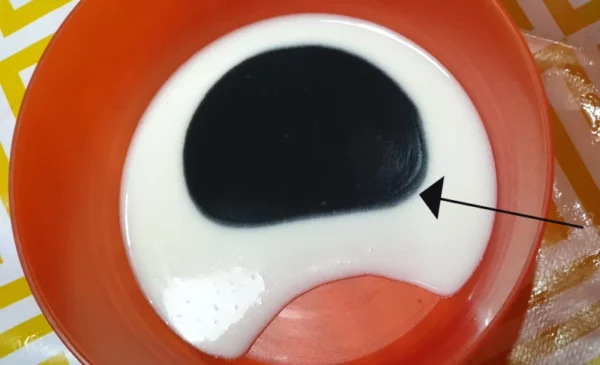
Just wait a little longer or mix your soap a bit more. Then test your soap again. This method takes away any guess work and eliminates failed batches.
The Stages of Trace
Ultra Light Trace
Ultra light trace occurs when the soap batter is fully emulsified and it has the consistency of single pouring cream.
If you try to drizzle some soap on the surface of the batter it will not leave any trails behind but the soap has still properly emulsified. You can check if it has fully emulsified using the method described above.
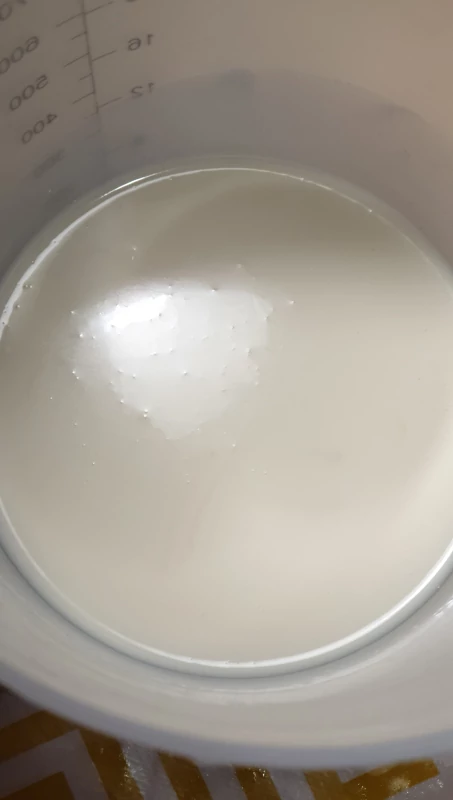
Light Trace
As mentioned above light trace occurs just after very light trace where you can see lines on the surface of the soap if you drizzle soap on the surface of the batter.

Medium Trace
Below is and example of medium trace. It is much thicker than thin trace but you can still work quite easily with the soap. If you try to sculpt the soap it will not hold its shape.
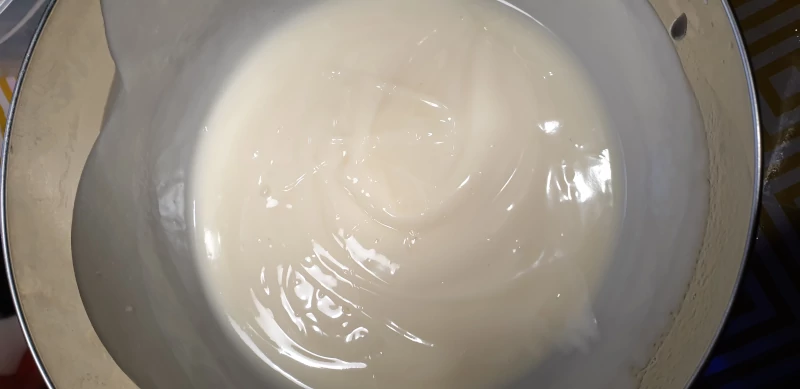
Thick Trace
This is and example of thick trace. You can see that I have sculpted the soap with a spoon to create a textured surface. At this stage of trace the soap will hold it’s shape if you manipulate it.
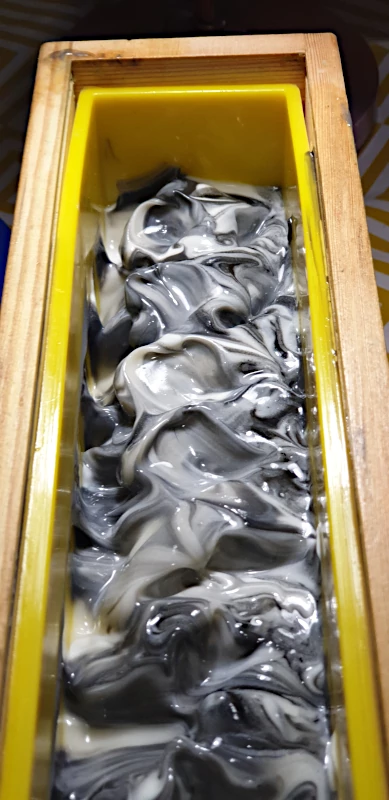
What are the main factors that affect the speed of trace?
The mains factors that affect how fast your soap will reach trace are –
- Temperature
- The oils in your recipe
- Speed and method of blending
- Fragrance and or essential oils
- The amount of water in your recipe
- Colours and additives
What temperature should my soap be to slow down trace?
When I first started to make soap I used to soap at really high temperatures i.e. 50 degrees centigrade (that’s what all the books and articles told me).
Now that is really hot. Soaping at such high temperatures will cause you soap to “trace” really quickly.
Heat is a catalyst i.e. it will make a chemical reaction happen faster. Eliminate as much heat from your soap making as you can. Soap at room temperature i.e. 21 degrees celcius ish.
I personally let my oils cool down to room temperature and put my lye in the fridge until it’s cold. Now this may surprise some of you out there. You might be thinking: What if the reaction doesn’t take place?
How can the oil and lye saponify if the temperatures are so different? Well truth is in my experience the reaction always takes place as long as your soap is 21 degrees celcius.
Even though there are significant differences in temperature between the lye and the oils, saponification will occur.
Usually as long as the oil and lye are within a 10 degrees celcius temperature difference the reaction will take place. However it happens at a much slower rate at lower temperatures.
In fact sometimes trace is so slow that you wish it would hurry up but this very slow tracing is necessary.
It gives you plenty of time to make those beautiful patterns and swirls that make everyone say “wow, that’s amazing.” And that is what we want right?
Soaping at low temperatures to slow down trace– Things to consider
Soaping at room temperature is a great way of slowing down the time it takes for soap to trace as long as room temperature is reasonable.
Tips for soaping in summer
In the summer months room temperature can be so hot that a normally slow tracing recipe can trace really fast in the heat.
In Summer you might want to cool your lye water. Please remember to use a soaping only fridge or place your container of lye water in an ice bath to cool it down.
Always label your lye water and keep it away from pets and children or anyone who might accidentally come into contact with it.
Tips for soaping in winter
In the winter months room temperature might be so cold that your soap recipe takes forever to reach trace.
No matter how much you stick blend, your soap just won’t trace. To help things along just heat your oils to at least 30 degrees celcius. This should help to speed things up.
Which Essential Oils should I use to slow down trace?
Some fragrance oils and essential oils contain substances including alcohols that can speed up trace. This can give you less time to make your beautiful swirls.
You can avoid this by using fragrances/essential oils that won’t speed up trace and will give you more time to work.
Some essential oils that won’t speed up trace include – Lavender, Citrus oils (Lime, Lemon, Mandarin, Litsea Cubeba), Vetiver, Tea Tree, Spearmint, Rosemary, Lemongrass, Eucalyptus to name a few.
Essential oils that can speed up trace include – Ylang ylang, Geranium, Clove and Cinnamon. Generally floral essential oils and spicy ones can really accelerate trace.
Which Fragrance Oils should I use that won’t accelerate trace?
Fragrance oils will behave differently depending on what they are made of so it is much harder to tell which ones will be accelerate or decelerate trace.
Some fragrance oils might have the same name but if they are made by different manufacturers they might contain different things and may affect trace in different ways.
So don’t be fooled into thinking that fragrance oils with the same name from different suppliers will behave in exactly the same way.
The fragrances to look out for though are Floral fragrances – Lily of the Valley and Rose are usually culprits. Fragrances that have a strong alcohol/cologne type base can also trace really fast.
Some suppliers can be really helpful and will offer advice about their fragrance oils and how they affect trace.
It is a good idea to test your fragrance or essential oil blend first in a small batch before you do your fancy swirls.
When to add your fragrance and essential oils – its all about timing?
Now that we know some fragrance/essential oils will accelerate/speed-up trace what can we do to give us more time to make pretty swirls before our soap gets too thick?
Separate your soap and add your colours before your fragrance
Allow enough time so that you can separate and colour your soap before you add the fragrance or essential oil.
To properly mix your colours into your soap you will probably have to use a stick blender or paint mixer to do this.
Blending and mixing in your colours will accelerate trace to some extent but not as much as if you had already added your fragrance. Some fragrances/essential oils can speed up trace at varying rates.
If your fragrance/essential oil doesn’t speed up trace then you don’t need to worry. You can add it before you separate your soap into colours.
Add your fragrance after you have mixed in your colours
If your fragrance/essential oils might speed up trace then it is best to add the fragrance/essential oil after you have added your colours.
Some fragrance/essential oil will actually retard or slow down trace so it might be beneficial to add them before you add your colours. Again citrus essential oils are your friends here.
If you have to separate your soap and colour your soap before you add your fragrance, this means that you will have to separate your fragrance as well.
How to divide your soap and add your colours before you add the fragrance.
And how to work out how much fragrance to add to each separate coloured soap batch – worked example below
So lets get started. Below is an example of how you would go about doing this.
Worked Example
So………. My un-coloured soap weighs 1000g. I am going to have a 4 colour swirl but I want more white soap than the rest of the other 3 colours.
In fact I want 500g of white soap which is 50% of the total batch. This means that the other 500g will have to be divided by 3 for the other colours 1000g / 3 = 166g.
So if I have 20g of fragrance/essential oil I will need 50% or half of that for my white soap so 10g.
The other half of the fragrance/essential oil will have to be divided into 3 equal parts.
So……… 10g / 3 = 3.3g so about 3.3g for each of the jugs with 166g of coloured soap.
So now that I have worked out how much fragrance I will need for each separate jug I can colour my soap first.
I can take my time to ensure that the colours are well mixed without worrying about the fragrance/essential oil speeding up trace and making my soap too thick. I can then add the fragrance oil afterward
The steps above may sound complicated, but if you really want to make an intricately swirled soap using a fast tracing fragrance/essential oils the tips above can buy you valuable some time.
How do the oils in my soap recipe affect trace and which oils should I choose?
Use a recipe that is lower in butters and harder oils. So try to minimise butters and hard oils such as palm oil, coconut, cocoa butter, shea butter and others as their chemical make-up help to speed up trace.
Soft oils such as almond and sunflower oil do a great job of slowing down trace. Sunflower oil does make your bar softer but it is great for extending your “tracing” window and it helps to make big, airy bubbles in your final bars.
Be aware that castor oil will accelerate trace quite a lot and castor oil is a soft/liquid oil.
Do try to get a good balance between you hard and soft oils so that you end up with a reasonably hard bar of soap that won’t turn mushy in the bath or shower.
Will the amount of water in my recipe affect the speed of trace?
Some soapers actually find that more water in their recipe will speed up trace.
In my experience I have always found that more water slows trace down so if you want time to make pretty swirls do not discount the water portion in your recipe.
Stick to a water to oil ratio of 33%. This still quite a bit of water but not too much to cause too many issues such as very soft soap or emulsification problems.
How will blending and mixing my soap affect the speed of trace?
Mixing is a catalyst for trace. The faster and more aggressively you mix your soap batter the faster it will reach trace.
If you want to slow down trace only use a a few short bursts of your stick blender to get it to very light trace. You will be able to tell once your soap has fully emulsified. See the notes above.
Remember if you need to blend your soap more to accelerate trace then it’s very easy to do.
But you cannot un-blend your soap once it’s mixed so go easy with the stick blender!
If you need to mix some more then use a spatula or you can use a small paint mixer like a “Badger” mixer to blend your colours and fragrances.
Will certain colours and additives affect the speed of trace?
In my experience titanium dioxide tends to heat up soap and accelerate trace. So be aware that if you add titanium dioxide to separated soap, that batch of soap may get thicker faster than the other soap and affect your swirling plans.
All clays are known to accelerate trace including red, Moroccan, pink and green. The amount that you use also affects the speed of trace so the more clay in your recipe the faster your soap will trace.
We hope that you found this article useful. Please let us know what you think or leave any of your suggestions about slowing down trace in the comments section. Thank you 🙂
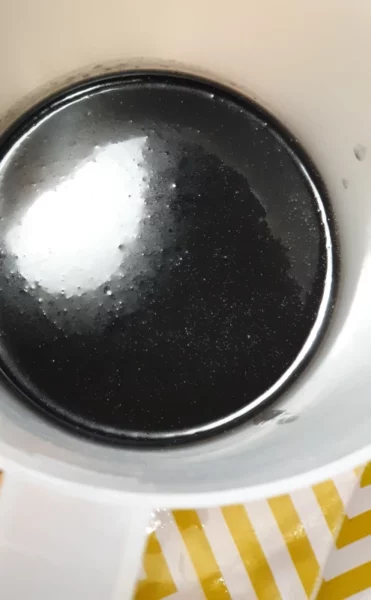


Un artículo muy completo e interesante
Muchos gracias!